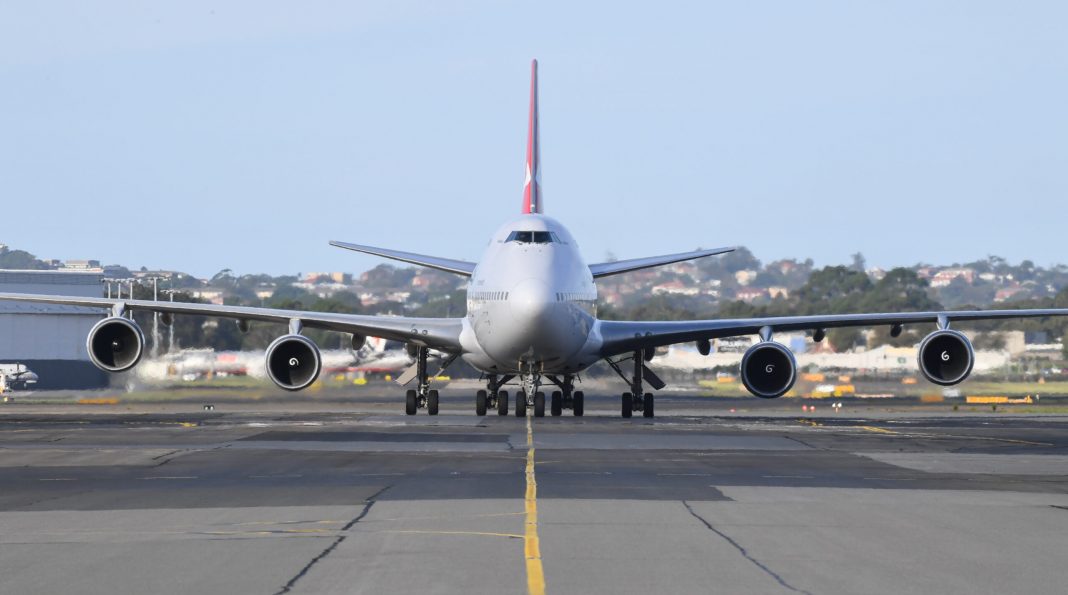Back in 2000, after much careful planning, what would become the A380 project was given the green light. Around the same time, Boeing was enhancing plans for a rival to the behemoth. However, the company would soon quietly scrap these plans, shelving them under the code of 747X. Could the manufacturer have made this aircraft work? How many versions of the 747X were conceptualized? Altogether, what happened to the project? Let’s find out.

What was the 747X?
The 747X was a project concept of a bigger version of the 747. It would use a new wing (derived from technology created for the 777 series) and use the latest engines that would allow a bigger, heavier aircraft to take off.
Boeing actually tried twice to design the 747X. The first time was in 1996 at the Farnborough Airshow. The firm released plans for a better 747X than the current model, the 747-400. The designs were the 747-500X, -600X, and -700X. The -700X was so huge that the aircraft’s iconic hump might have been lengthened the whole way down to the tail.
After that, according to FlightGlobal, back in 2000, Boeing was ramping-up commitments to a $4 billion development of the 747X family. The company was looking at a formal launch by the second quarter of 2001.
Former Boeing CEO and chairman Phil Condit said the launch of this larger 747 family could come as quickly as six months. He added that between 10 and 30 orders would be enough to get the ball rolling.
The firm was scaling up staffing efforts for the possible launch of the 747X-Stretch. Additionally, the timescale for service entry was late 2005, which was the same target for the A3XX (which would become the A380).
Progress made
Boeing eventually designed the 747X and the 747X-Stretch. The first was a far more modest improvement on the 747-400 design (essentially a small increase in capacity, a reduced cost, and modern engineering). The 747X-Stretch would see the 747 design increased to almost 80.2 meters long.
Both planes would use the 777 flight deck and feature a 777 inspired interior layout. However, neither got a lot of interest from airlines. So, they never made it off the drawing board.

What were their specifications?
The Stretch variant was expected to be the basis for a new 747 family. It was planned to include a 150t payload freighter, along with domestic and combi versions. Furthermore, the program was also to include a successor to the legendary -400. The manufacturer added that it would have 3% to 5% lower seat/km costs and 10% lower trip costs than the A3XX-100.
Here are the specifications of the different types of 747X, along with an Emirates Airbus A380 thrown in for good measure.
| Model | Passengers | Range |
|---|---|---|
| 747-500X | 462 | 10,000 mi / 16,100 km |
| 747-600X | 548 | 8,900 mi / 14,300 km |
| 747-700X | 650 | 8,823 mi / 14,200 km |
| 747X | 430 | 10,000 mi / 16,100 km |
| 747X-Stretch | 500 | 9,000 mi / 14,500 km |
| A380 | 517 (3 class, Long Range) | 9,320 mi / 15,000 km |
For additional comparison, the 747-400 seats 416 and flies 14,200 km.
As you can see, the first three versions of the 747X were huge and would easily rival an A380. Boeing subdued their designs for the second iteration of the 747X but still improved on passenger numbers and distance.

Why did it never go ahead?
Creating a new aircraft is expensive. Not only do you need to hire engineers, design the aircraft, build prototypes, and create a new factory, you also need to market the new product, launch it, paint it, and spend years bringing it to market.
All up, it would have cost Boeing around $4 billion. In addition to these costs, the aircraft themselves would have had a very high price, possibly more than the Airbus’ $445.6 million list price.
Lastly, Boeing carefully examined the market and determined that it could go one of two ways. Big aircraft with plenty of capacity flying between major city hubs (Like London, New York, or Dubai), or smaller planes that fly point to point and skip the hub cities (Like Chicago to Manchester). Boeing ultimately decided that the latter was the future and started designing aircraft for that purpose, like the Boeing 787 Dreamliner.

Many of the features developed for the 747X series eventually got used for the 747 Advanced, or better known as the 747-8.
Notably, even the order book for the passenger 787-8 wasn’t so full. Only a handful of major commercial airlines requested the jet. Air China, Lufthansa, and Korean Air Lines were some of the key operators to place orders for the jet’s passenger variant. However, the aircraft did see some more favorable numbers when it came to the freighter edition.
Was it the right move?
Altogether, in hindsight, it may have been a great decision not to go ahead with the 747X. Both the 747 and A380 quickly fell out of fashion over the last few years in preference of more efficient options.
The two types are being rapidly retired by airlines across the globe. Despite the initial high hopes of the A380, it soon became disfavored by airlines after only a decade or so after its introduction.
What are your thoughts about the proposed Boeing 747X aircraft? Were you looking forward to flying on the plane when the previous announcements were made? How do you think it would have competed with the Airbus A380? Let us know what you think of the jet in the comment section.
[ad_2]
Source link


